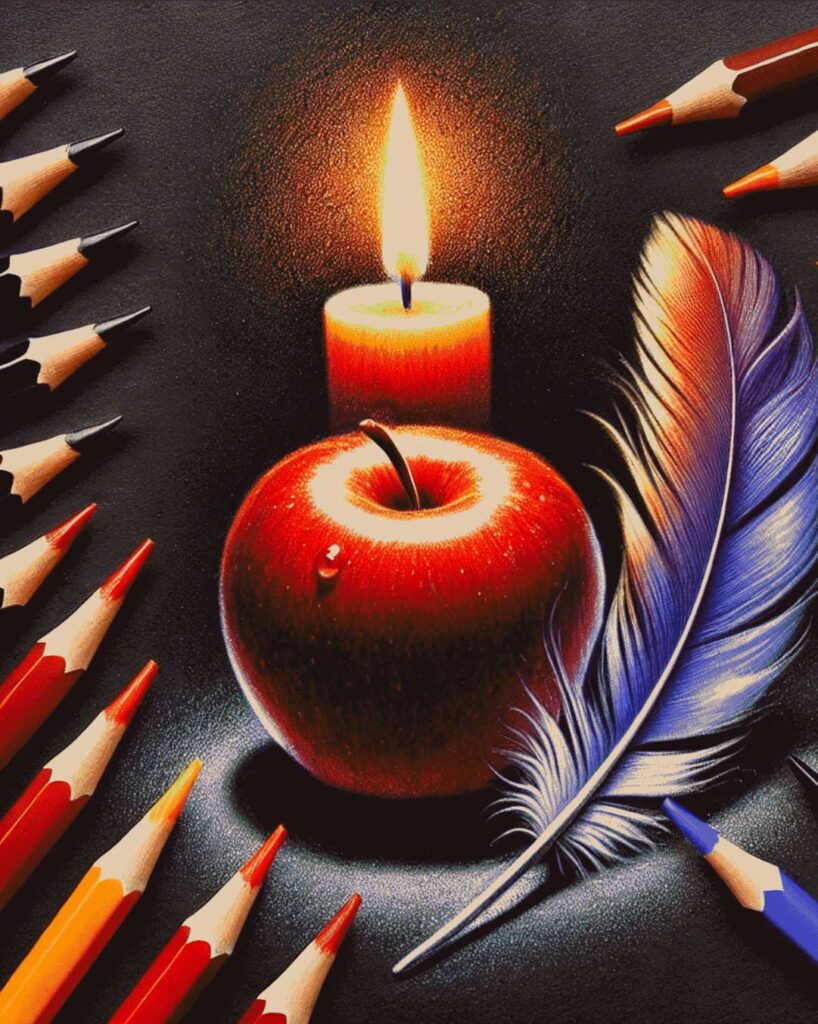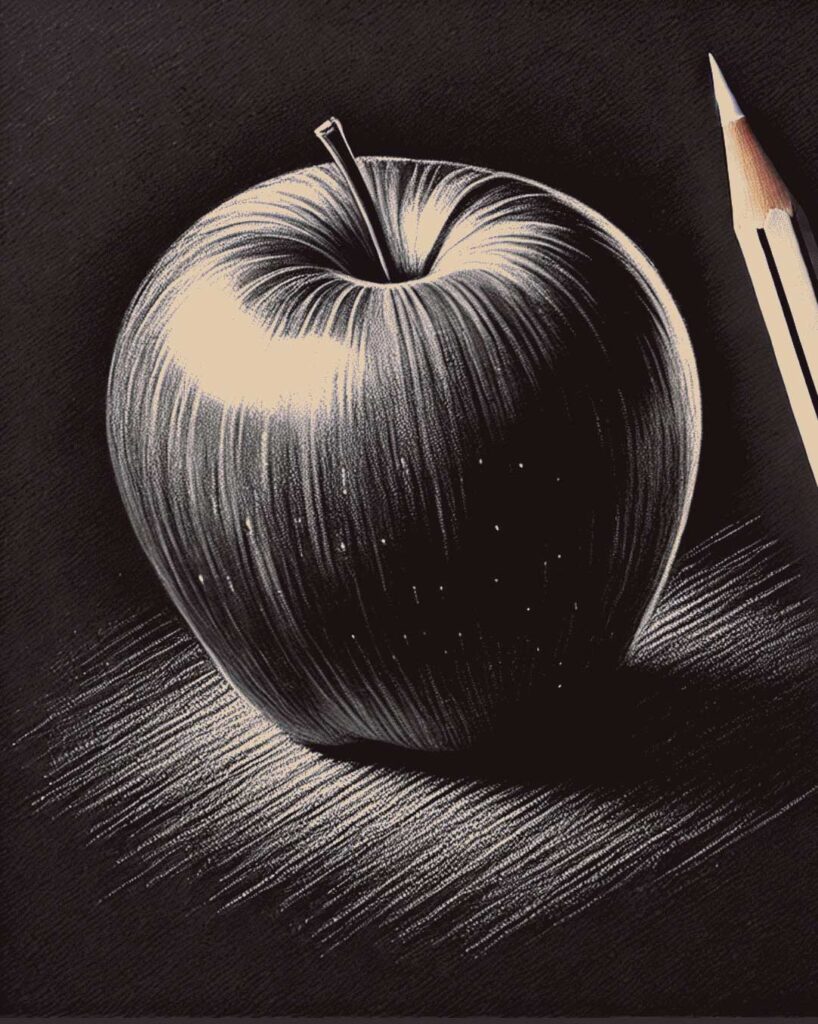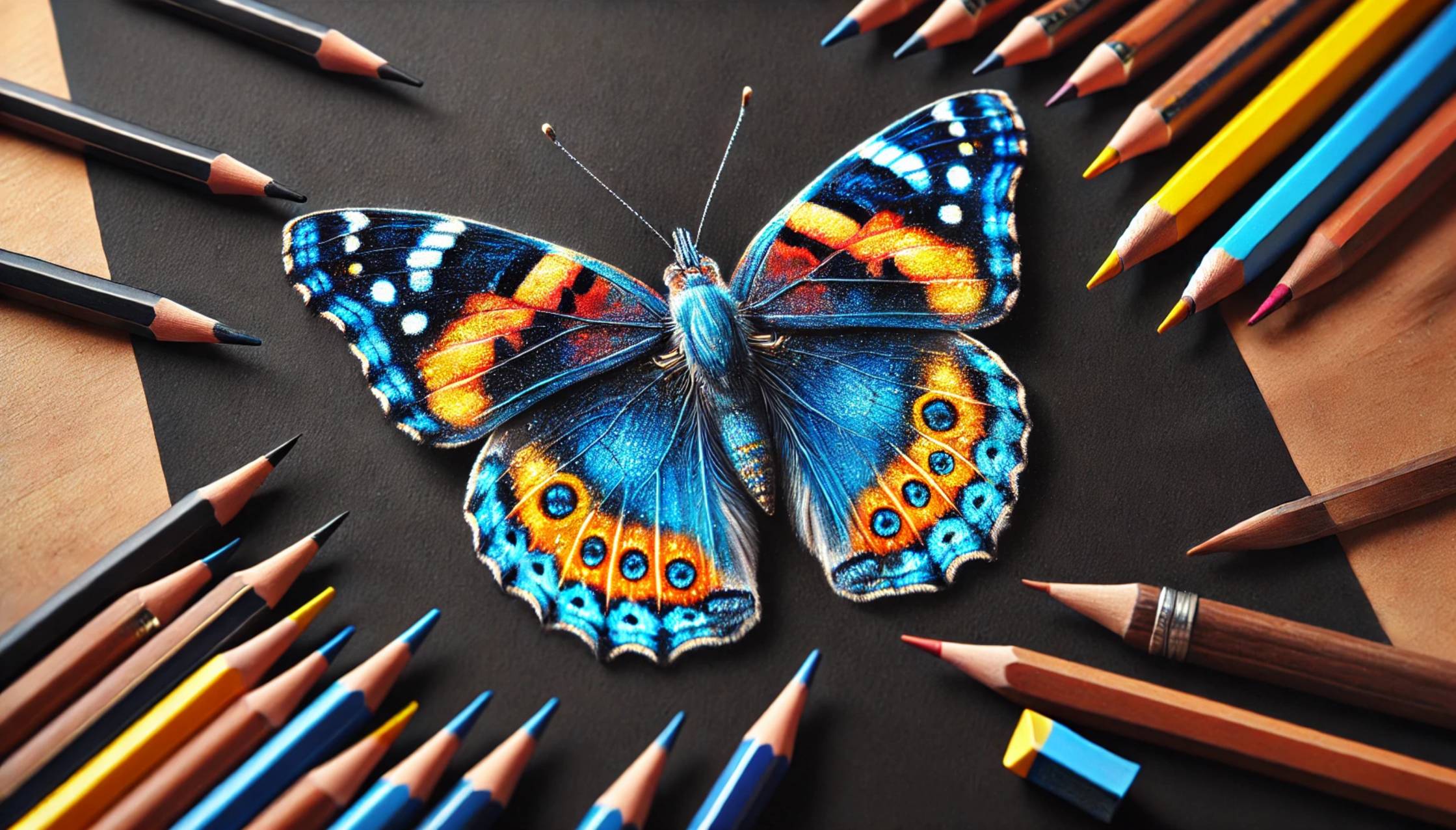Discover the Allure of Drawing on Black Paper
Have you ever wondered how some artists create stunning artworks that seem to leap off the page? The secret often lies within the surface itself—black paper. This unique medium challenges traditional methods and offers a fresh perspective on light and contrast. Art enthusiasts and hobbyists alike are turning to black paper as a canvas to explore creativity in new and exciting ways. In this blog post, you’ll uncover the benefits of drawing on black paper, learn about essential materials, and gain practical tips to make your art stand out with vibrant depth and detail.
Why Drawing on Black Paper Is Unique
Drawing on black paper offers a reverse approach to traditional drawing methods. Instead of building up darkness, you start with darkness and introduce light. This method allows you to focus on highlights, making your artwork pop in unexpected ways. Unlike the typical white paper that demands shading for depth, black paper encourages artists to think in terms of light. The dark background provides a stark contrast that can elevate your colored pencil work, offering a unique challenge that is both engaging and rewarding for artists seeking to expand their techniques.
Benefits of Using Black Paper for Colored Pencils
The benefits of using black paper are numerous, starting with its ability to enhance the vibrancy of colors. When you draw on black paper, the colors appear more saturated and bold, creating a striking visual impact. Additionally, using black as a base can simplify the process of creating shadows, as they blend naturally into the background, allowing you to emphasize the highlights and mid-tones. This technique not only saves time but also opens up creative possibilities, enabling you to experiment with lighting effects that might be cumbersome on white paper. Plus, the novelty of working with black paper can reignite your passion for drawing, offering a fresh and exciting challenge to enhance your artistic repertoire.
Essential Materials for Drawing on Black Paper
Before you begin your masterpiece, gathering the right materials is crucial. Not all pencils and papers are created equal, especially when it comes to working on a darker surface. Selecting the right tools will ensure your artwork achieves the desired effect and stands the test of time.
Choosing the Right Colored Pencils for Black Paper
When it comes to selecting colored pencils, not all brands perform equally on black paper. Opt for pencils that are known for their opacity and pigmentation, such as Prismacolor, Faber-Castell Polychromos, or Caran d’Ache Luminance. These brands offer rich, creamy textures that lay down vibrant colors, essential for creating impactful artwork on a dark surface. It’s also wise to invest in a range of shades, particularly lighter tones and whites, which will act as your primary highlights against the black background.
Best Paper Types for This Technique

Choosing the right paper is just as important as selecting your pencils. Look for papers specifically designed for colored pencils, such as toned or black drawing paper with a smooth texture to allow for even application. Brands like Strathmore or Canson offer excellent options that prevent the paper from warping or deteriorating, ensuring your art remains pristine. While thickness is important, a smooth finish will help maintain color vibrancy and ease of blending, allowing you to build layers without compromising on quality.
Preparing Your Sketch: Key Techniques
Preparation is key when working on black paper, as it requires a shift in how you approach composition and sketching. Starting with a solid foundation will set the stage for a successful piece.
Sketching with White and Light Pencils

Begin your composition by lightly sketching your design using white or light-colored pencils. This technique allows you to map out your artwork without creating distracting marks that may be difficult to erase on black paper. These preliminary lines will serve as guides as you layer on color and detail. Be sure to keep your initial sketches light and adaptable, providing room for adjustments as your artwork develops.
Setting Up Your Composition on a Dark Background
When setting up your composition on black paper, consider how the dark background will interact with your subject. Use it to your advantage by emphasizing highlights and letting shadows merge with the paper. Plan your focal points around the areas where light will hit, and think about how the interplay of light and dark can enhance the depth and dimensionality of your piece. A strong composition with strategic lighting will make your artwork more engaging and dynamic.
Using Contrast to Enhance Your Artwork
Contrast is a powerful tool when drawing on black paper. Understanding how to use light and dark effectively will bring your creations to life with dramatic flair.
How to Use Light and Dark to Create Depth
To create depth in your artwork, focus on the interplay between light and dark. Start by laying down lighter colors first, which will act as highlights against the black. Gradually introduce mid-tones, blending them smoothly into the lighter areas. This layering approach helps establish depth without overwhelming the composition. Remember, the black paper serves as your darkest shadow, so use it strategically to anchor your piece and guide the viewer’s eye across the artwork.
Incorporating Shadows and Highlights for Realism
Shadows and highlights are crucial for achieving realism on black paper. Use white pencils or highlight pens to accentuate areas where light naturally falls, creating a sense of volume and form. For shadows, allow the black paper to peek through, subtly enhancing contrast without the need for heavy penciling. This technique not only conserves your pencils but also ensures that your highlights remain clean and bright, adding realism and dimension to your art.
Layering Colors for Depth
Layering is an essential technique in colored pencil art, especially when working on black paper. It allows you to build vibrant hues and texture, bringing your artwork to life.
Starting with Light Colors First
Begin your color application with light hues, as they will stand out against the dark background and provide a base for subsequent layers. Applying these lighter shades first prevents them from becoming muddied and ensures they remain vivid. This approach sets the groundwork for building intensity and allows you to control the overall tone of your piece effectively.
Gradual Layering Techniques to Build Vibrancy
Gradual layering involves slowly building up color intensity by applying multiple light layers. Use a soft hand to add colors incrementally, allowing each layer to blend seamlessly into the next. This technique fosters rich, saturated colors while preserving the paper’s texture and preventing wax build-up. By layering thoughtfully, you’ll achieve a depth of color that appears luminous against the black paper.
Blending and Burnishing Techniques on Black Paper
Blending and burnishing are critical for achieving a polished finish on your artwork, smoothing out transitions and enhancing vibrancy.
How to Blend Smoothly Without Losing Vibrancy
To blend colors smoothly, use a blending pencil or a colorless blender to soften edges and transitions between hues. Gently move in circular motions to avoid harsh lines, maintaining a vibrant appearance. If your colors begin to dull, lightly reapply them over the blended area, ensuring the vibrancy remains intact. Experiment with different pressures and techniques to find the perfect balance for your style.
Burnishing for a Polished, Glossy Finish
Burnishing involves applying heavy pressure to blend colors into a smooth, glossy finish. This technique compresses the paper fibers, enhancing the saturation and sheen of your artwork. Use a white or light-colored pencil to burnish areas where you want to amplify highlights, as this will intensify the brightness and add a professional touch to your piece. Burnishing is ideal for focal points, drawing the viewer’s attention with a polished, captivating effect.
The Role of White and Bright Colors
White and bright colors play a significant role in your artwork, serving as highlights and creating striking effects against the black paper.
Using White for Highlights and Effects
White pencils are invaluable for adding highlights and special effects to your artwork. They can create luminous spots where light hits and are useful for adding intricate details that enhance realism. Whether it’s the glint of sunlight on water or the sparkle in an eye, white pencils provide the finishing touches that elevate your artwork from ordinary to extraordinary.
How Bright Colors Interact with Black Paper
Bright colors bring life to black paper, interacting dynamically to create vibrant contrasts. Because black absorbs more light, the colors you apply will naturally appear more intense. Use this to your advantage by incorporating bold hues that pop against the dark background. Experiment with different color combinations to understand how they interact with the black, enhancing your composition with unexpected and delightful results.
Avoiding Common Mistakes
Even experienced artists can encounter pitfalls when drawing on black paper. Avoiding common mistakes will help you create impactful artwork without frustration.
Overworking the Paper
Overworking the paper is a common issue that occurs when too many layers are applied, causing the surface to become smooth and waxy. To avoid this, use a light touch and build layers gradually, applying minimal pressure until you’re ready to burnish. If you find yourself overworking an area, step back and evaluate your progress before continuing, ensuring the integrity of your paper is maintained.
Choosing the Wrong Colors for Contrast
Choosing the wrong colors for contrast can result in flat, uninteresting artwork. Avoid using colors that are too similar in tone, as they may not stand out against the black paper. Instead, opt for hues with a strong contrast, enhancing the visual impact of your piece. Use color theory as a guide, selecting complementary shades that naturally intensify each other and give your artwork depth and dimension.
Case Studies: Successful Art on Black Paper
Examining case studies of successful art on black paper can provide inspiration and insight into effective techniques and approaches.
Case Study 1: A Detailed Floral Drawing
In this detailed floral drawing, the artist used black paper to emphasize the delicate petals and intricate patterns of the flowers. By layering bright, bold colors and using white pencils for highlights, they achieved a sense of depth and realism that draws the viewer in. The black background provided the perfect canvas to showcase the vibrant blooms, making them appear almost three-dimensional.
Case Study 2: Using Layers to Achieve Realistic Portraits
A portrait artist demonstrated exceptional skill by using layers to capture the nuances of human expression. Starting with a light sketch, they gradually built layers of skin tones and highlights, creating lifelike features with depth and emotion. The black paper served as a natural shadow, allowing the artist to focus on the play of light and texture, resulting in a portrait that is both striking and intimate.
Practical Exercises for Mastering the Technique
Engaging in practical exercises will help you refine your skills and master the art of drawing on black paper, translating theory into practice.
Exercise 1: Creating a Simple Gradient
Start with a simple gradient exercise to understand how colors transition on black paper. Begin with a light color at one end and gradually blend into a darker hue, practicing blending techniques as you go. This exercise will help you develop a feel for how colors interact and transition, a fundamental skill in creating cohesive artwork.
Exercise 2: Drawing a Still Life with High Contrast
Try drawing a still life with strong contrasts, focusing on highlights and shadows. Choose a subject with varied textures and lighting, such as fruit or glassware, and use light and bright colors to emphasize form and detail. Practice layering and blending techniques to enhance depth, honing your ability to capture realism and dimension on a dark surface.
Creative Possibilities: Abstract and Realism
Exploring different styles, from abstract to realism, will expand your creative possibilities and allow you to express your unique artistic vision.
Abstract Approaches with Colored Pencils
Abstract art thrives on black paper, offering a fresh perspective on color and form. Experiment with bold colors and geometric shapes, letting your imagination guide you. Use layering and blending techniques to create dynamic compositions that challenge traditional norms and push the boundaries of creativity, resulting in unique, thought-provoking pieces.
How Realism Can Shine on Black Paper
Realism shines on black paper, as the dark background provides a stark contrast that enhances lifelike details. Focus on capturing subtle shifts in light and shadow, using layering techniques to build depth and texture. Pay attention to the intricate details of your subject, such as a portrait’s facial features or a landscape’s changing light, resulting in realistic artwork that captivates and inspires.
Preserving Your Artwork
Preserving your artwork is essential to ensure its longevity and maintain its vibrant beauty. Proper care will keep your pieces looking their best for years to come.
Fixatives and Finishing Touches
Using fixatives is crucial for sealing your artwork and preventing smudging. Choose a fixative designed for colored pencils and apply it in light, even layers. Once dry, consider adding finishing touches to enhance your piece, such as additional highlights or fine details, ensuring your artwork is complete and ready for display.
Storing and Displaying Black Paper Art
Proper storage and display of black paper art will protect it from damage and fading. Store finished pieces in acid-free sleeves or portfolios, away from direct sunlight and humidity. When displaying your artwork, choose frames with UV-protective glass to safeguard against discoloration, ensuring your creations remain vibrant and beautiful.
Quotes from Artists Who Draw on Black Paper
Insights from artists who draw on black paper can inspire and encourage, offering firsthand accounts of the challenges and rewards of this unique medium.
Insights on the Challenges and Rewards of Using Black Paper
Artists who have embraced black paper as a medium often speak to the challenges of mastering contrast and light. Yet, they also highlight the immense satisfaction of seeing their subjects come to life in vivid detail. The process encourages a deeper understanding of light and shadow, pushing artists to develop skills and techniques that enhance their overall artistic abilities. For many, the rewards of creating striking, dynamic artwork on black paper far outweigh the challenges, offering a fulfilling and inspiring artistic experience.
Conclusion: The Artistic Impact of Drawing on Black Paper
Drawing on black paper is a rewarding endeavor that encourages artists to see the world through a new lens. By focusing on light and contrast, you can create stunning, vibrant artwork that captivates and inspires. Whether you’re exploring abstract forms or capturing realistic details, black paper offers a unique canvas for artistic expression. With the right techniques and materials, you can unlock a world of creative possibilities, enhancing your art and elevating your skills. Ready to take on the challenge? Grab your colored pencils and explore the artistry of black paper today
Frequently Asked Questions (FAQs)
1. What materials are best for drawing on black paper?
Colored pencils, pastels, and gel pens are popular for drawing on black paper due to their opacity and vibrant colors. These materials can effectively create striking contrasts and vivid imagery.
2. How do I prevent smudging on black paper?
Prevent smudging by using a fixative spray designed for the medium you are using, such as colored pencil fixatives. Apply in light, even layers and let each layer dry thoroughly.
3. What are some beginner exercises for drawing on black paper?
Beginner exercises include creating simple gradients to practice blending and drawing a high-contrast still life to understand lights and shadows on a dark surface.
4. What are the benefits of using black paper for artworks?
Black paper enhances the contrast between light and dark, making colors appear more vivid. It encourages artists to focus on highlights and shadows and offers a fresh approach to both abstract and realistic art styles.
5. Can watercolors be used on black paper?
Watercolors generally don’t show up well on black paper due to their transparency. Instead, opt for opaque mediums like gouache or acrylics for painting on dark backgrounds.





